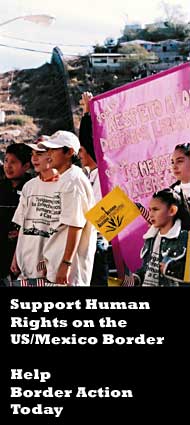Even as Arizona Rightwingers contort in rage at anyone they perceive to be undocumented -- it's pretty hard to tell by looking -- the Arizona Republic today reports that half the city's first pioneer immigrants were Mexicans.
Ruins and relics found at a downtown Phoenix construction site re-confirm that fact, as if we didn't know that the history of Arizona is permanently conjoined with that of Mexico:
During a four-week dig, scientists found wall fragments dating to the late 1800s - what's left of the first businesses built by Anglo and Mexican settlers. John Y.T. Smith's mill, the Hotel Luhrs and attorney Edward Irvine's adobe and brick buildings were the town's commercial heart during that period.So we're not Anglo. We're White Mountain and San Carlos Apache, Tohono O'odham, Chiricahua, Mescalero, Hopi, Navajo, Havasupai, and Mojave, and Mexican, and African American, Asian, Ethiopian, Iraqi, Japanese, Russian, Portuquese, Guatemalan, French, English, Polish, Malian, Nigerian, Ghanaean. . . you get my point.
'We are looking at the very beginnings of the city of Phoenix,' city archaeologist Todd Bostwick said.
Underneath the 19th-century foundations, the team of archaeologists also found the buried remnants of about a dozen prehistoric pit houses. Hohokam farmers who lived in the Valley between A.D. 1 and 1450 probably occupied them, archaeologists say. No human remains were found. . . .
Over the years, floods, silt and wind buried pit houses and pioneer-era buildings under a few feet of dirt.
The building fragments date to a time when only a few hundred people, about half of them Mexican settlers and half of them Anglos, lived in what is now Phoenix.
Early settlers eked out a hardscrabble life. Relations with Native Americans, including the Gila River, Maricopa, Pima and Apache tribes, were sometimes friendly, sometimes tense.
The intersection of Central Avenue and Washington Street was the heart of Phoenix life in the late 1800s, historians say.
Mills, saloons, government buildings, shops and professional offices sprang up in that area.
Experts knew about the pioneer-era businesses, but State Historic Preservation Officer James Garrison said he was astounded by how much was preserved under the parking lot.
Some of century-old walls fragments ran for a dozen feet, and one adobe cellar was practically intact.
'The first two-story building in Phoenix was sitting on top of a pit house,' Garrison said.
Even the Hohokam finds hinted at trade.
Archaeologists found a bracelet made from a seashell that is found only at a tourist destination in Mexico that is familiar to Arizonans.
'We aren't the first to vacation at [Puerto Penasco] Rocky Point,' Bostwick said.
So this Pat Buchanan/Minuteman/Russell Pearce business about racial and cultural homogeneity -- and that's what it's really about -- makes about as much sense as it makes humane policy. None.
Like the rest of the Southwest, Arizona derives its massive socio-cultural appeal from the mix of Mexican, Native American, and Anglo cultures. Phoenix got to be the fifth-largest city in the country on the backs of Mexican, Native American, and Anglo people, male and female. And any future we have will be hewn out by Mexican, Native American, and Anglo people, male and female.
If we treated our Hispanic art and artifacts the way we are treating our Hispanic people, our museums, libraries, and special collections would be destroyed, along with the material heritage of the entire state. Even our land is Native American and Mexican. From the point of view of the Tribes, we're all "illegal." You'd think we'd have the common decency to remember that as we try to solve the immigration/security issues.
The immigration and security issues are complex, economically, emotionally, physically, and logistically. But we won't reach workable solutions any faster by dividing and terrorizing a third of our people.
Those who want a genuine workable, just, and long-term solution owe it to everyone to shift the debate from people to policies, to stand up against anyone who demonizes and abuses anybody, and to refuse laws that threaten our common economic stability.
It's been said before: We're in this together, and pretending that we're not is like saying, "Your half of the boat is sinking."



















0 comments:
Post a Comment